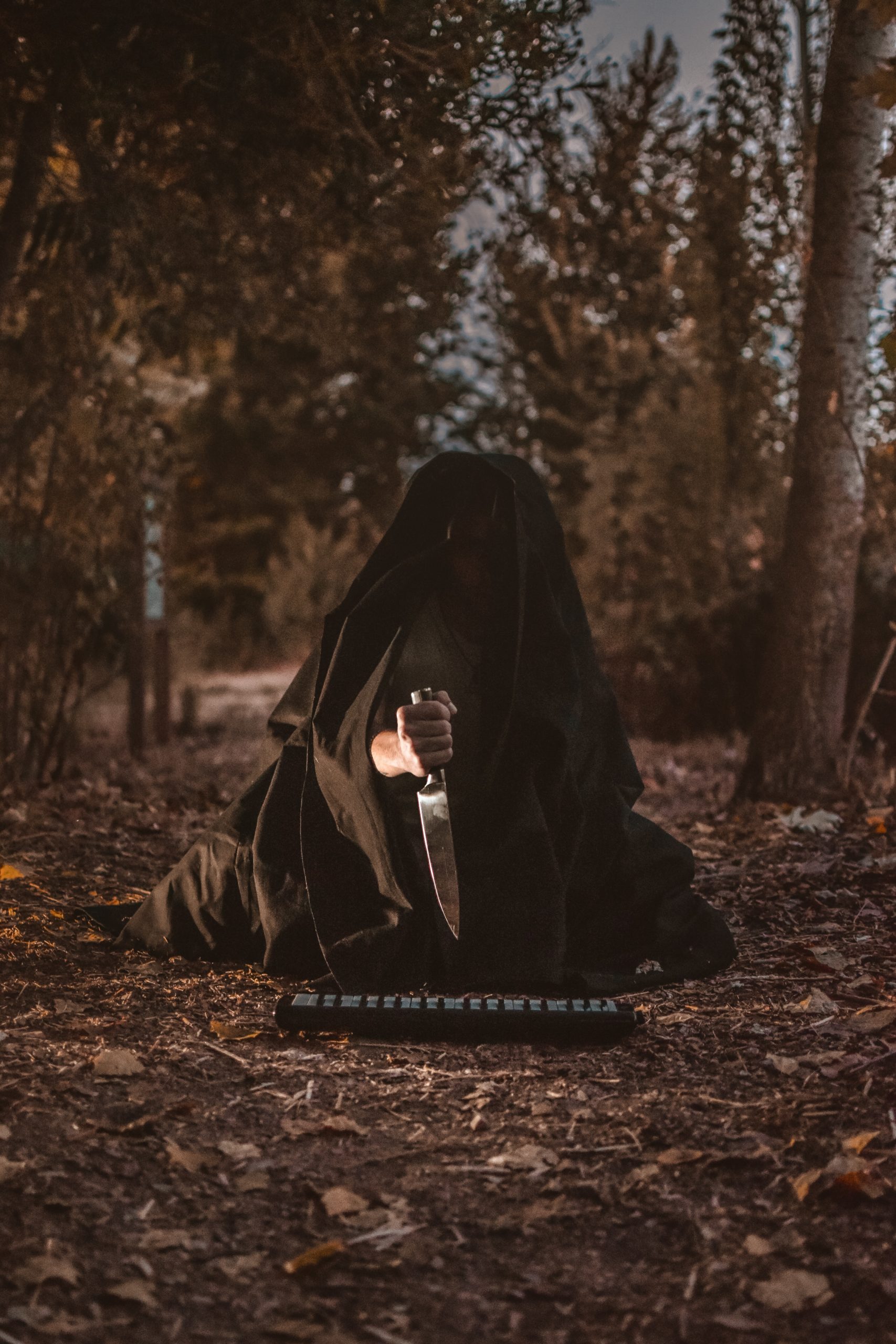[Words by Ruth Underwood (they/them)]
[Photo by Javier Peñas on Unsplash]
Content Warning: racism, sexism, transphobia and homophobia
In film, the embodiment of evil, in monsters, witches, and satanic figures, is instantly recognisable to us. Film uses visual cues such as dress to communicate key information about characters and their roles. The way dress is used to communicate this comes from a long history of image and the ways that artists envisioned evil figures such as witches, devils and monsters. Primarily, the way they imagined these figures was based on a projection of desire and repulsion – taboo and hatred. The way we instantly understand that Elvira is a witch, or that HIM is satan, is based on our understanding of visual cues that come from a longstanding tradition of projected hate and desire.
Witches are instantly recognisable from their gothic dress. Characters such as Elvira (Elvira, Mistress of the Dark) wear black velvet, heavy eye liner and tall black heels. Witches such as Alice (Moomin) and Meg (Meg and Mog) are instantly recognisable from their tall, pointed hats, and their broomsticks. The historical basis for witches’ reputations as wearing tall, pointed hats and all black clothing is difficult to pinpoint. Many point to the Salem Witch Trials’ description of the devil as “a tall, dark man in a high-crowned hat”[1]. The devil has been historically linked to witches; during the Black Plague, the number of witch hunts pursued increased exponentially due to a heightened fear of the devil’s influence. Combined with condemnation of pagan rituals and beliefs, this projection of anxiety onto women, pagans, and people of colour evolved into a characterisation of witches by dark colours, pointed hats, pentagrams, and magical powers. Satan is instantly recognisable from their red skin, horns, hooves, pointed tails, glowing eyes and general nudity. Satan’s animalistic appearance can be traced back to the early Christian condemnation of pagan beliefs, as he is often linked visually to the pagan God of nature, Pan, a half man-half goat figure whose characteristic lustfulness “made him easy to associate with the forbidden”[2]. He has also been compared to the demon, Lilitu, from early Babylonian texts, a winged female demon who flew through the streets at night seducing men. The association of these characters with lust and carnal appetites made them easy to associate with sin, and their appearance as horned, winged creatures made them easy to differentiate from angelic figures in early Christian art. Films such as The Devils and Bedazzled portray a hypersexual satanic figure, and films such as Night Train of Terror portray Satan in as horrific a way as possible.
Figures of evil are a projection of desire and hatred, and their dress gives us important visual cues about this. Elvira, for example, does this in a comedic way, as a parody of Hollywood depictions of dark, powerful, evil figures. Wearing low-cut, split-skirt black dresses that show her cleavage and legs, she embodies sexuality and deviance. Figures of evil, such as witches and satanic characters, embody a projection of desire. Issues such as women’s control over their sexuality and men’s confidence around homoerotic temptations are portrayed as taboo by the mainstream and this attitude is projected onto figures of evil as a means of condemning them in mainstream society, thereby allowing an element of control over women and queers. The sexualised appearance we associate with evil is a product of this. Even in The Powerpuff Girls, HIM is depicted as a masculine satanic figure dressed in women’s clothing. This association of queer aesthetics with evil using dress is a symptom of the media’s projection of societal attitudes onto figures of evil. Evil characters sometimes act as a visual embodiment of fearmongering. Condemnation of other faiths and races are embodied in the aesthetic of evil in film and TV. Witches may practice voodoo, with white glowing eyes and painted skin, or they may use traditional pagan symbols such as pentagrams to seduce men.
Sometimes figures of evil in films are dressed in a relatively ordinary, conservative manner. Their evil powers are acquired incidentally, or part of their evil is their ability to blend in with the rest of society, often to coerce others into assisting them in their deeds. This is the case in TV shows and films such as Sabrina the Teenage Witch and The Exorcist. Their lack of symbolically dark attire does not halt the mainstream audience’s tendency to project their fear. however, Linda Blair, who played Regan in The Exorcist when she was only 12 years old, became the subject of Christian groups’ hate shortly after the film was released. She was made visually recognisable as a monstrosity by prosthetics such as scars and contact lenses and scripted to act as if the devil had taken over her body. Christian groups projected their anxieties about satanism onto her, a child actress. The way we recognise evil in films, therefore, is two-fold; figures of evil may dress provocatively, in ways that are dark and taboo, or they may dress conservatively, in order to play on general anxieties about evil being hidden among us, even in the most innocent members of society.
Citations:
[1] Montesano, Marina. “The hellish history of the devil: Satan in the Middle Ages.” National Geographic, October 30, 2018.
[2] Lodi, Marie. “The Complete History of Clothes Worn by Witches.” Bustle, October 28, 2019.
[3] Schiff, Stacy. “The Witches of Salem.” The New Yorker, August 31, 2015.
[4] Cohen, Jeffrey Jerome. “Monster Culture (Seven Theses).” In Monster Theory: Reading Culture, edited by Jeffrey Jerome Cohen, 3–25. Minnesota: University of Minnesota Press, 1996.

